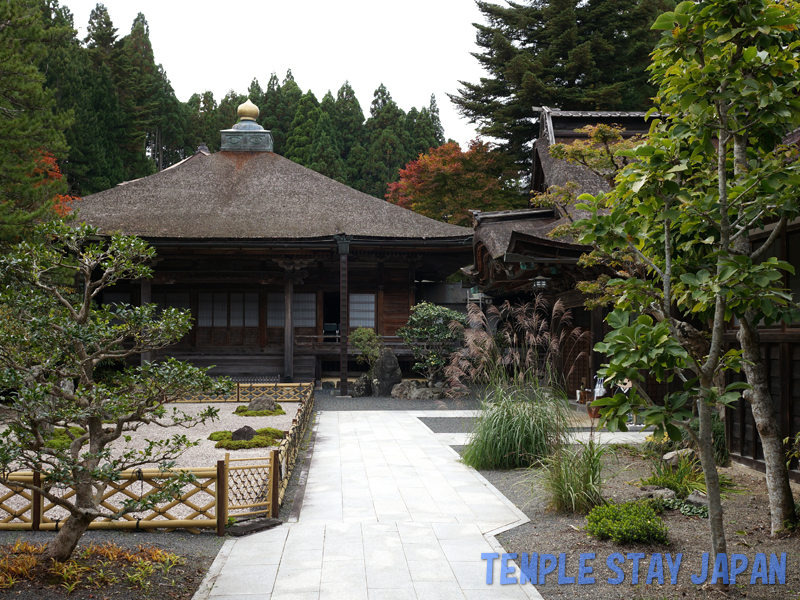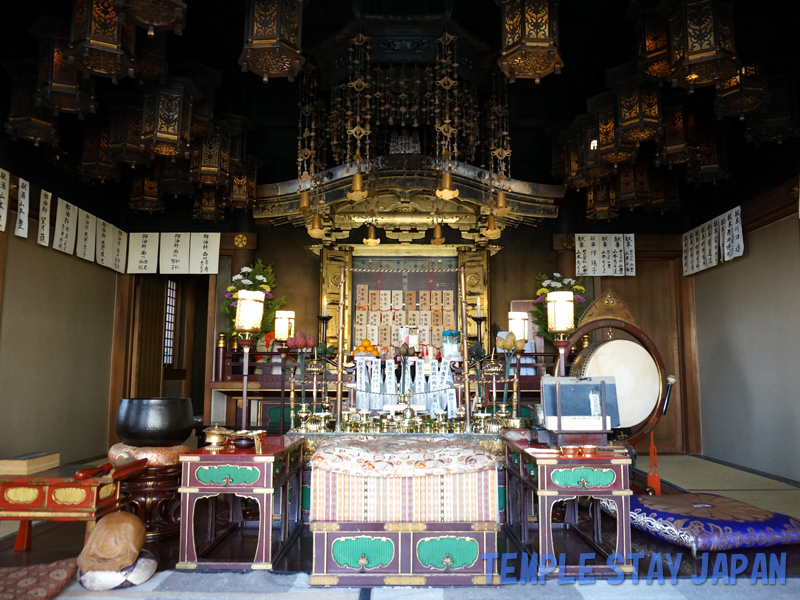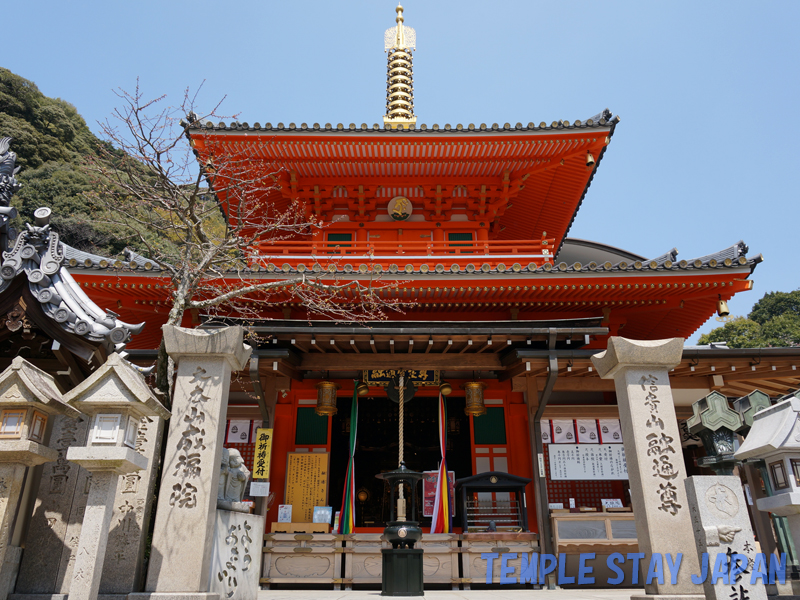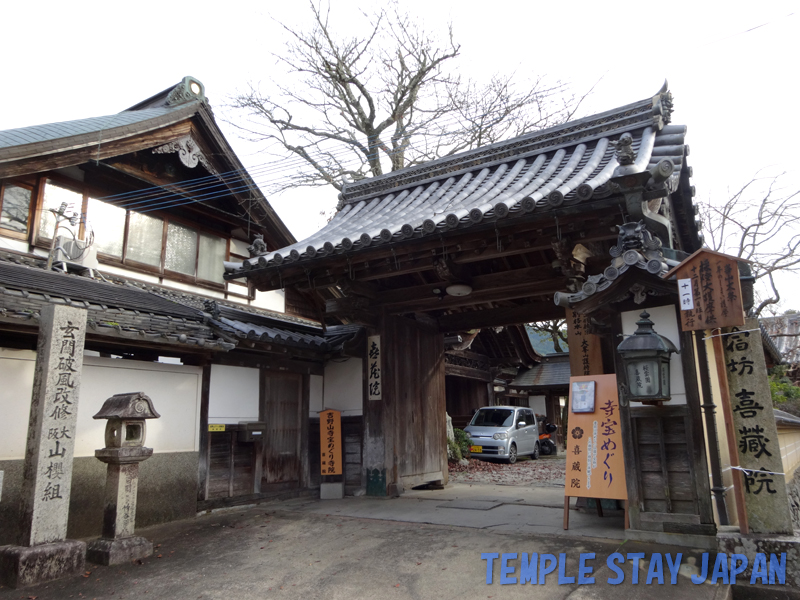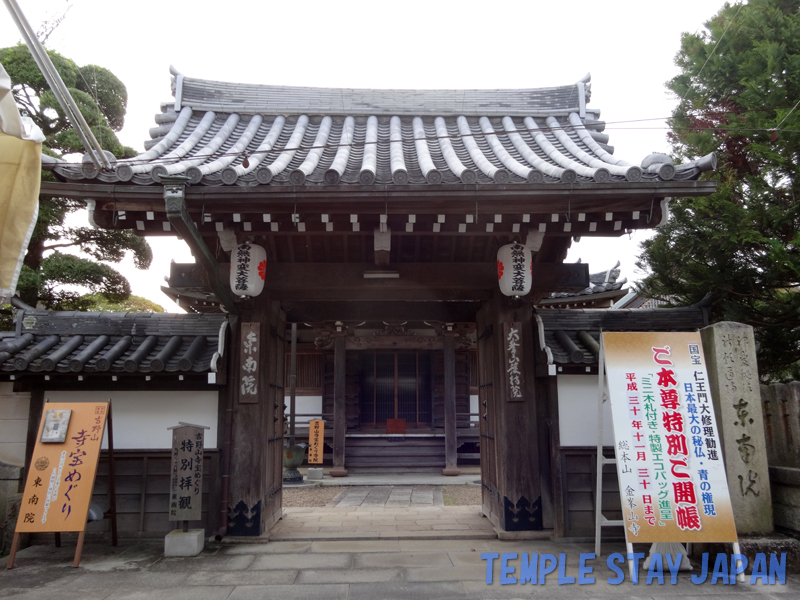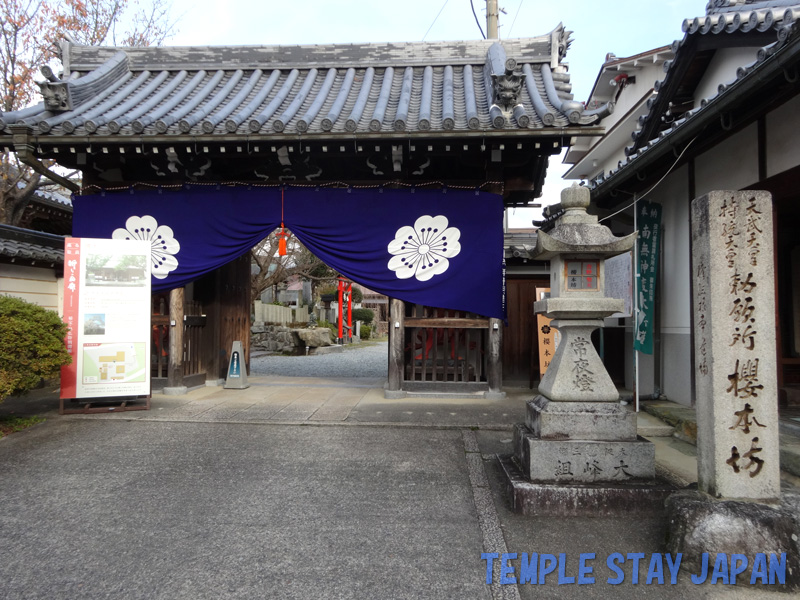Kansai– category –
-

Yochiin temple stay (Wakayama)
There is a religious service in the morning in the main hall. You can experience shakyo (copying sutra by hand) and shabutsu (copying images of Buddha by hand). They serve shojin vegetarian cuisine using seasonal ingredients. the morning service was conducted from 6:30. -

Ohmijingu OhmiKangakukan shrine stay (Shiga)
This is an accommodation facility located in the forest in the precinct of Ohmijingu shrine. As the first shrine with a clock in Japan. This shukubo does not offer religious experiences for guests, but you can freely participate in the various festivals and religious events. -

Housenji ZEN Center temple stay (Kyoto)
This temple offers full-fledged zen ascetic training experiences. Training of various periods from one night training on Saturday and Sunday to the short training program for three nights four days, as well as the long term training programs of 1 month or longer, are available at request. -

Shigisan Gyokuzoin temple stay (Nara)
I took a taxi cab from Oji Station. It took about 15 minutes to the parking place below Gyokuzo-in. It was a clean and modern facility and the shukubo staff welcomed me politely. The morning religious service starts from 3:00 in the Yokuyu-do followed by the Goma prayer from a little past five in the morning. -

Shigisan Jyohukuin temple stay (Nara)
Shigisan Chogosonshi-ji temple is an old temple, which is said to have been founded by Prince Shotoku (574 to 622). Jyohuku-in is located in the precinct mountain. You are free to participate in the services. They serve quasi-shojin cuisine in a kaiseki course style. -

Kizoin temple stay (Nara)
This temple is located in Yoshino which prospered as a sacred place of Shugendo. This is a youth hostel, but I was able to have the room all to myself because there were not so many guests when I stayed there in the beginning of June. I had meals upstairs with the other guests. -

Tonanin temple stay (Nara)
This is a shukubo located near Kinpusen-ji Zao-do temple. I walked the Yoshino/Omine route. I participated in a Rengenyubu event (to enter Mount Omine with a religious purpose) sponsored by Kinpusen-ji temple, therefore it was training and not sightseeing. -

KumanoHonguTaisya Zuihoden shrine stay (Wakayama)
This is a shrine registered as a UNESCO World Heritage Site as the center of Kumano worship lasting from the Heian period (794 to 1185). Zuihoden, the shukubo, is located beneath the stone stairs leading up to the main sanctuary of the Kumano-hongu Taisha. -

Sakuramotobo temple stay (Nara)
This is a shukubo in Yoshino where the history of Shugendo remains. Meetings of shakyo and shabutsu (copying of sutra and images of Buddha by hand) are held on the second Saturday of each month. They also schedule and conduct training at Okugake in Yoshino several times a year. -

Seigantoji Sonsyoin temple stay (Wakayama)
This is a grand ascetic training Mecca around the Nachi-no-Taki waterfall, with a drop of 133 meters. As a sacred place lasting more than 1,600 years, this temple is registered as a UNESCO World Heritage Site. The room I stayed in was a 6-tatami mat Japanese style room with a TV set, an electric fan and a yukata robe.

